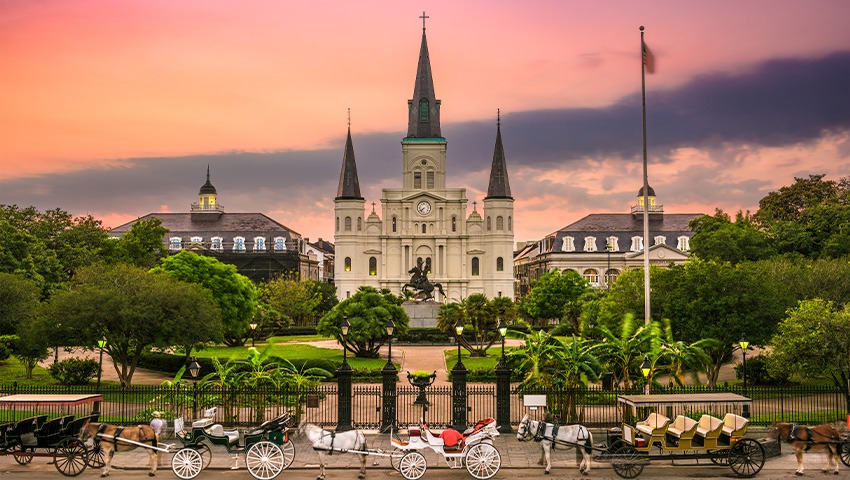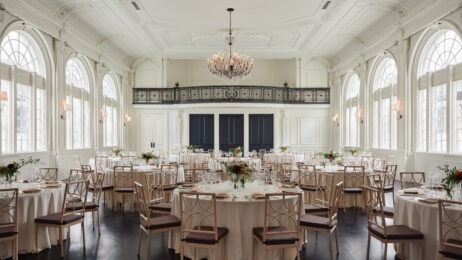Music, food and hospitality are revived in Louisiana
New Orleans prides itself on its resilience as a city, so it is no surprise tourism is returning to The Big Easy rapidly as Covid restrictions are lifted. A city coming together for revitalization is a commitment New Orleans has made before, are making again, and that commitment is a characteristic unique to New Orleans.
The sense of community, support and responsibility to uplift each other is seen throughout the residents, industries and culture bearers of historic New Orleans.
Stay Surrounded by Culture
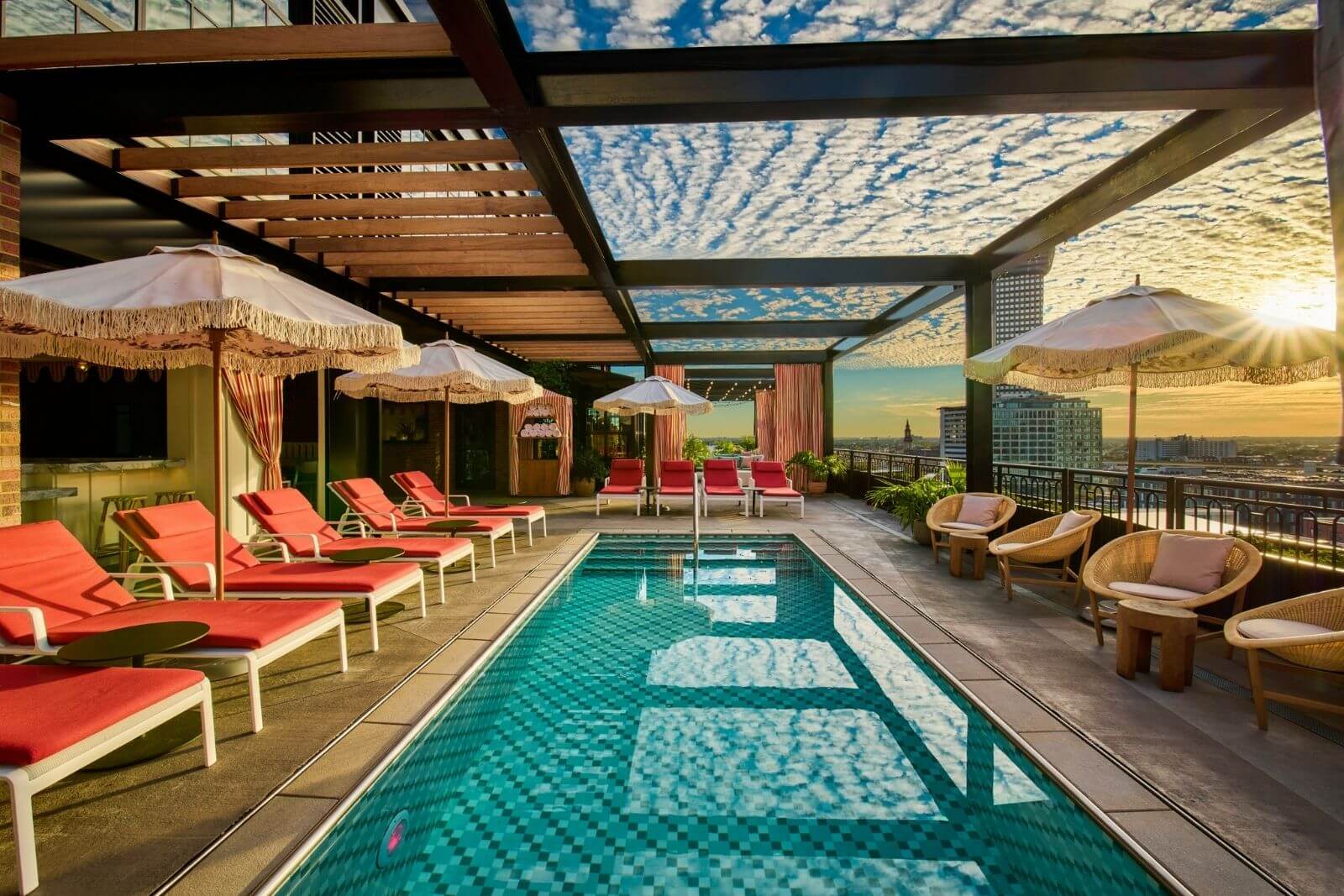
The New Orleans campaign “Built to Host” emphasizes the unique way in which New Orleans brings their authentic vibe to the meetings and events industry and to every aspect of a visitor’s experience. The culinary scene, the live music organizations and the hospitality industry all collaborate to create an integrative and vibrant destination.
In the heart of the French Quarter district is Omni Royal Orleans. Earning its landmark status after serving as a cultural “neutral ground” after the Louisiana Purchase, the vibrant French Quarter is an amalgam of music and food both inside and immediately outside the hotel.
Read More: Headed South? Here’s Where to Meet
With 345 guest rooms, three on-site bars and 14,000 sq. ft. of meeting space, visitors have just as much to enjoy within the hotel walls as they do on Bourbon Street. The in-house restaurant Rib Room Rotisserie Extraordinaire combines music, food and hospitality. Visitors can dine on New Orleans cuisine while hearing American standards on the piano, vocalists singing blues or jazz musicians for Jazz Brunch on Sundays.
The Mississippi waterfront is home to Four Seasons Hotel New Orleans. After finishing its $500 million renovation in August 2021, the hotel retained its New Orleans opulence. Mali Carow, general manager of the riverfront hotel, explains how food, music and hospitality work together. “We offer the city’s premier culture, cuisine and entertainment all under one roof, including dining concepts from two James Beard Award-winning and beloved local chefs, weekly performances by Branden Lewis, a Grammy-nominated Preservation Hall musician, the showstopping Chandelier Bar and local art on every floor.”
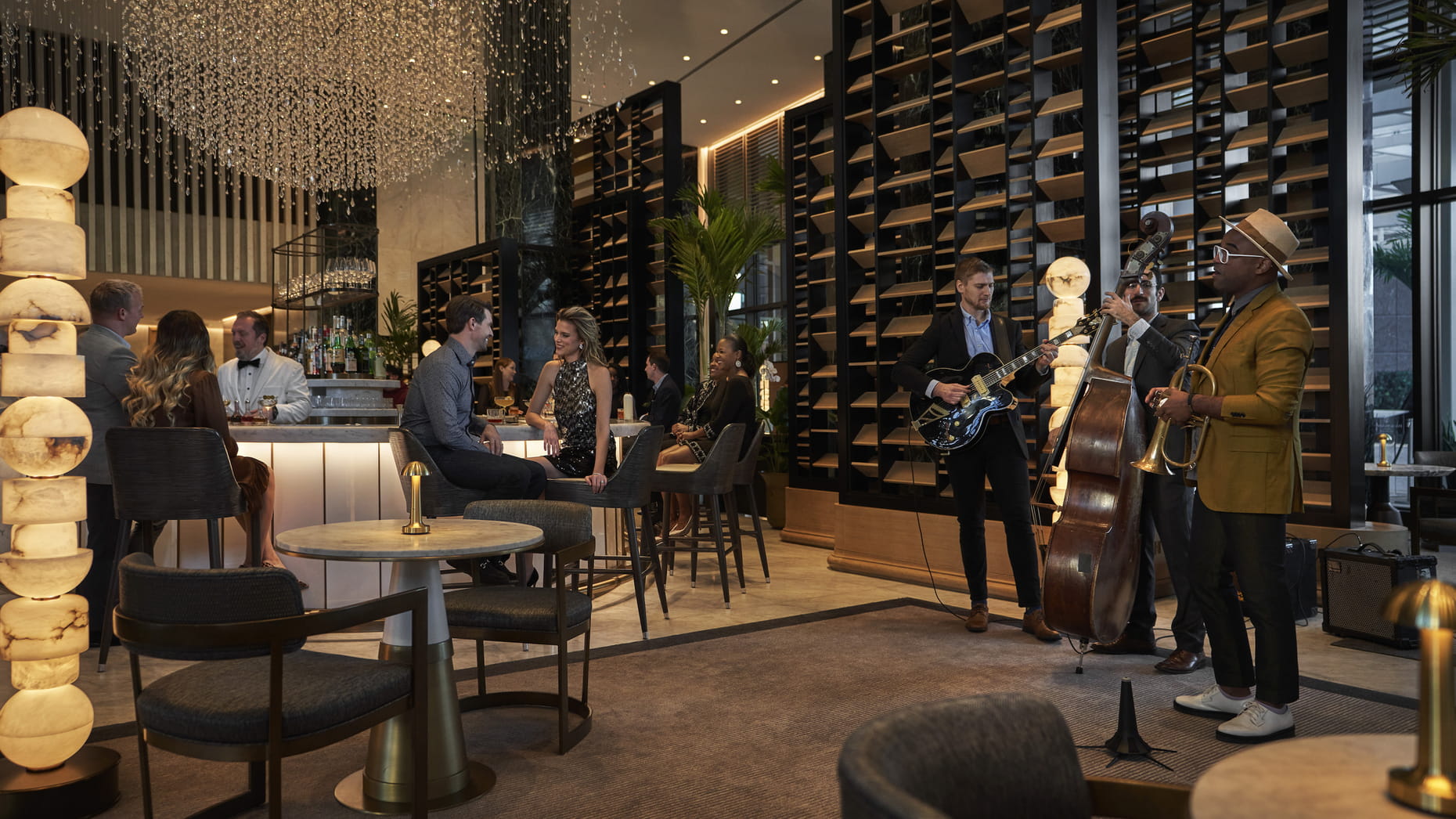
Chandlier Bar
The hotel offers 341 guest rooms and suites and 29,000 sq. ft. of indoor and outdoor event and meeting spaces.
Offering a diverse range of events and meeting spaces with a subtle 1970s aesthetic is Virgin Hotels New Orleans. The hotel’s meeting spaces range from “The Manor” offering 1,860 sq. ft. to more private lounge spaces such as “The Shag Room” finished with shag carpet and local art.
The throwback decor of the 1970s continues in “The Pool Club. The tropical rooftop space overlooks New Orleans’ Warehouse District and is decorated to be an urban oasis, bringing tropical ‘70s island vibes to the city of New Orleans.
New Orleans Marriott Warehouse Arts District recently rolled out a full renovation to the historic building across the street from the convention center that introduced the “great room” concept to the lobby, refreshed 24,751 sq. ft. of meeting space and added a spa vibe to 332 guest rooms. The property conveniently located in what is known as “The SoHo of the South” is within walking distance to live music and world-class dining
An Accessible City
Stephanie Turner, vice president of convention sales and strategies for New Orleans & Company, describes how the compact nature of the city simplifies planning events at New Orleans Ernest N. Morial Convention Center.
“Everything to experience is in about a two-and-a-half-mile radius,” says Turner. “You have distinctly different neighborhoods. From the French Quarter to the Warehouse District, to Downtown, to the Convention Center area—all very different but compact.”
You don’t even have to leave the convention center to experience New Orleans! Turner says the center is completely in tune with the energy of the city.
“We will use music to move a large session to the opening of the exhibition,” says Turner. “We will use a second line—which is a very traditional experience here—and we parade attendees from their session to the opening of the exhibition floor.”
“Part of being Built to Host is you can forward your customers’ ideas for a successful meeting and weave the things about New Orleans that are so unique into them!”
The convention center holds 1.1 million sq. ft. of exhibit space and is the sixth-largest facility of its kind in the country.
Cultural Fusion and Elevated Eats
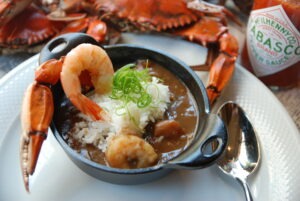
The culinary scene in New Orleans is unlike any other. With its dynamic and diverse population and cultural crossover, the food in New Orleans has harnessed the beauty of fusion to create a diverse yet simultaneously cohesive cuisine.
Stan Harris, president and CEO of the Louisiana Restaurant Association (LRA), attributes the exciting cuisine in New Orleans to its rich cultural diversity.
“I really do believe that when you take the French, the Spanish, the Creole, the African, the German—all the different things are part and parcel to what creates the unique flavor palette for the food in New Orleans,” says Harris.
Diversity is Delicious
New Orleans has an incredibly diverse population with an even more diverse culinary scene. From Europe to Africa and across to Asia, New Orleans embraces different flavor profiles to create their very own.
“When you take the French, the Spanish, the Creole, the African, the German—all the different things are part and parcel to what creates the unique flavor palette for the food in New Orleans.”
– Stan Harris, Louisiana Restaurant Association
Asian cuisine and Southern staple dishes come together at Maypop. The fine-dining restaurant serves a menu of innovative fusion dishes to showcase the beauty of the diversity in New Orleans. Enjoy unexpected dishes like Cambodian marinated skirt steak with Southern fried purple yams or crispy fried oysters with a bourbon barrel soy aioli to understand how blending cultures through food is a special experience.
Chef Lisa Nelson is a native Trinbagonian and has brought the plethora of her island’s flavors and ingredients to fuse them with Louisiana soul food at Queen Trini Lisa. The islands of Trinidad & Tobago are already immersed in flavors from Africa, East India, Asia and others—you can only imagine the complexity of the flavor profile at Queen Trini Lisa’s. With dishes like the classic bread fish sandwich dressed in Caribbean pineapples and plantains or your basic Southern rice and beans punched up with coconut milk, Queen Trini Lisa exemplifies how culinary fusion can reflect the harmony of the city.
The New Age of Cajun and Creole
When visitors think about what to expect from the cuisine in New Orleans, they might jump immediately to Creole and Cajun-style classics with heavy-handed spice and seasoning. “That’s not what you find here,” says Harris. “The bulk of the restaurants are using flavor profiles that are more developed.” The Cajun and Creole food in New Orleans is elevating classics to fine dining experiences made with locally sourced ingredients.
Although established in 1946, the classic New Orleans restaurant Brennan’s has evolved with the times. Offering dishes representing traditional Creole fare and impressing with modern techniques, Brennan’s is the place to go for upscale Creole. While the names of dishes are seemingly humble, make no mistake—the blackened redfish and paneed Louisiana rabbit are exquisite dishes from expert chefs. But don’t worry, Brennan’s still serves its iconic Bananas Foster invented right in its kitchen for breakfast, lunch and dinner.
While Creole and Cajun are often referred to synonymously, this is not the case. Cajun cuisine has its own roots and New Orleans has elevated classic dishes from the bayou to fine dining in restaurants like Atchafalaya.
Atchafalaya is a modern and innovative Cajun restaurant with a provocative food and cocktail menu in a rustic building erected in 1924. Enjoy dishes such as pan-roasted gulf fish or Lowcountry shrimp and grits as you listen to live music in the historic building that is now home to Atchafalaya.
Live Music is Life
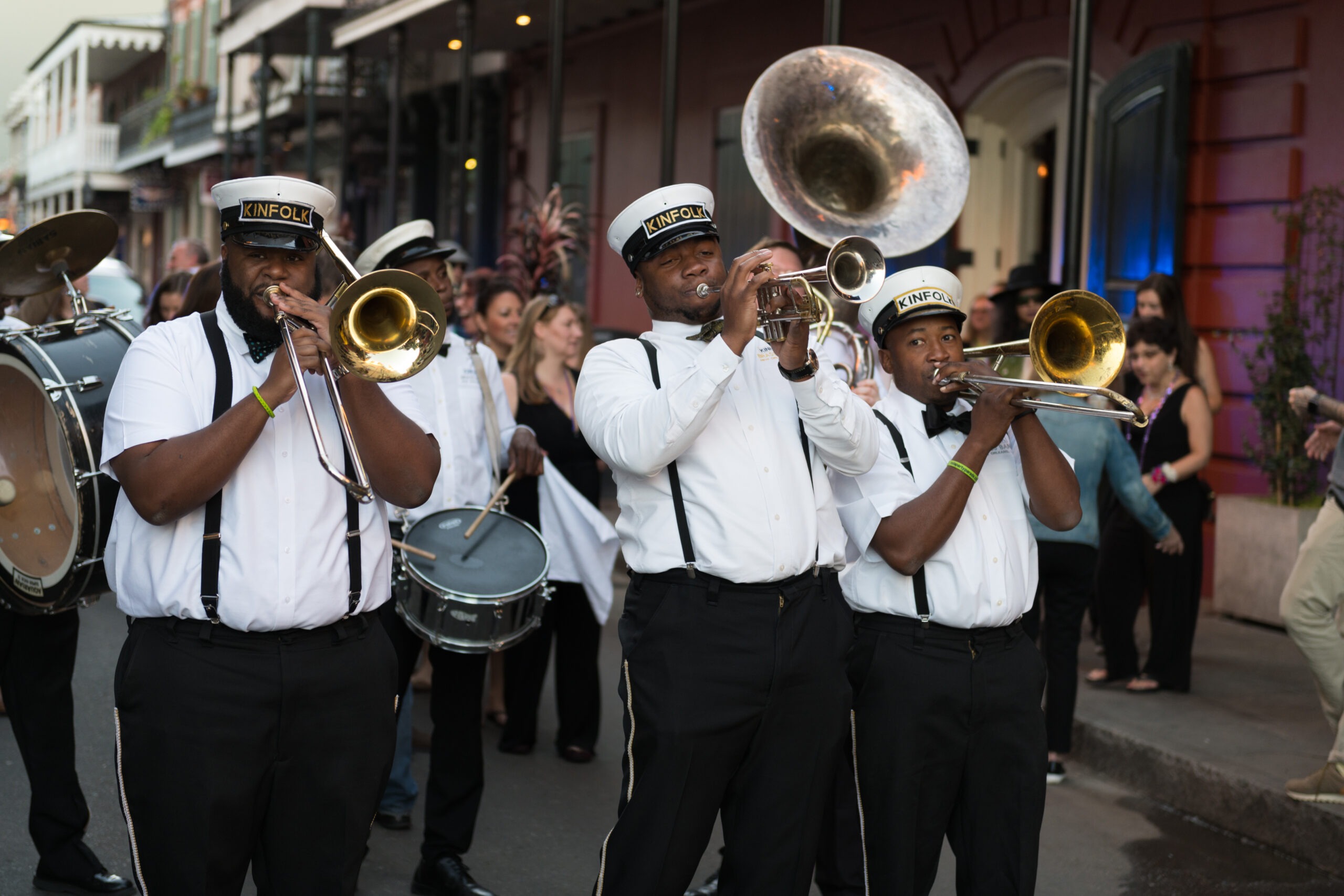
Live music in New Orleans is part of its identity, a form of the city expressing itself as you walk the streets. After the global tourism, concert and restaurant industries shut down during the pandemic, rebuilding has been difficult, yet there is no city as resilient as The Big Easy.
Sig Greenebaum, founder of NOLAxNOLA, saw the need for live music to return to the city and decided to do something about it. “If we could create an entity to market, to support the venues, we could make this statement to say, ‘Come to New Orleans, stay in New Orleans, and support the music.’”
The organization was founded to bring live music back to the city and quickly partnered with New Orleans & Company to make it happen. “New Orleans and Company was really excited about the idea of going to the roots of the city, the music venues, the musicians and working from literally the ground up,” says Greenebaum.
Turner agrees with Greenebaum. “One of the best things that came out of Covid was NOLAxNOLA.”
NOLAxNOLA and the support it receives from the tourism and culinary industries is the inspiration for the name of the organization. “The name NOLAxNOLA is New Orleanians helping New Orleanians,” says Greenebaum. “Nobody does it better than New Orleanians.”
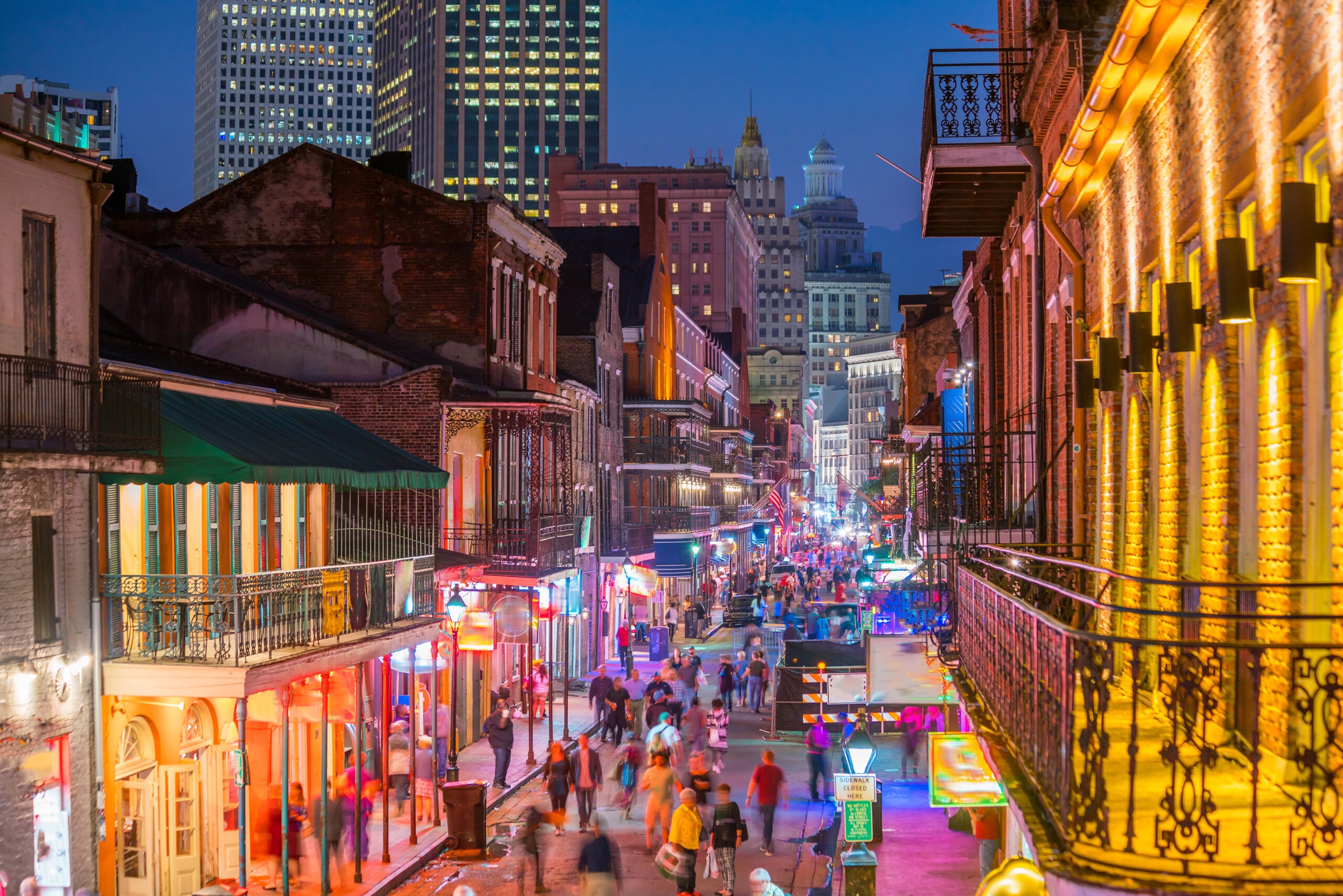
While festivals can bring people, music and food together, New Orleans has live music everywhere. Preservation Hall in the French Quarter showcases New Orleans jazz on an almost nightly basis. The historic venue opened in the 1950s and features individual artists and bands for an intimate jazz experience.
“When you really get down to it, it’s about the people…There’s no other place like it.”
– Stephanie Turner, New Orleans & Company
For a different kind of live music experience, The Howlin’ Wolf features more mainstream New Orleans talent such as Grammy-award winning Rebirth Brass Band and the eclectic Big Sam’s Funky Nation. While the music may be hip and modern, The Howlin’ Wolf serves up homestyle cooking with bacon cheddar beignets and gator with creole slaw.
It’s About the People
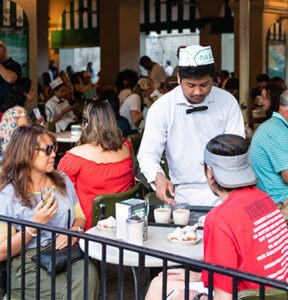
What is most impressive and evidently clear about New Orleans is not only the melding of business and culture, but the people of the city that make that experience possible. New Orleans has a community of a unified and celebratory livelihood that one does not find anywhere else. The New Orleans natives interviewed in this article articulate the humanitarian nature of their city best.
“When you really get down to it, it’s about the people,” says Turner. “People create the architecture, people create the food, people create the welcoming hospitality that exists here. And it’s very authentic. There’s no other place like it.”
Resources
This article appears in the December 2022 issue. You can subscribe to the magazine here.
